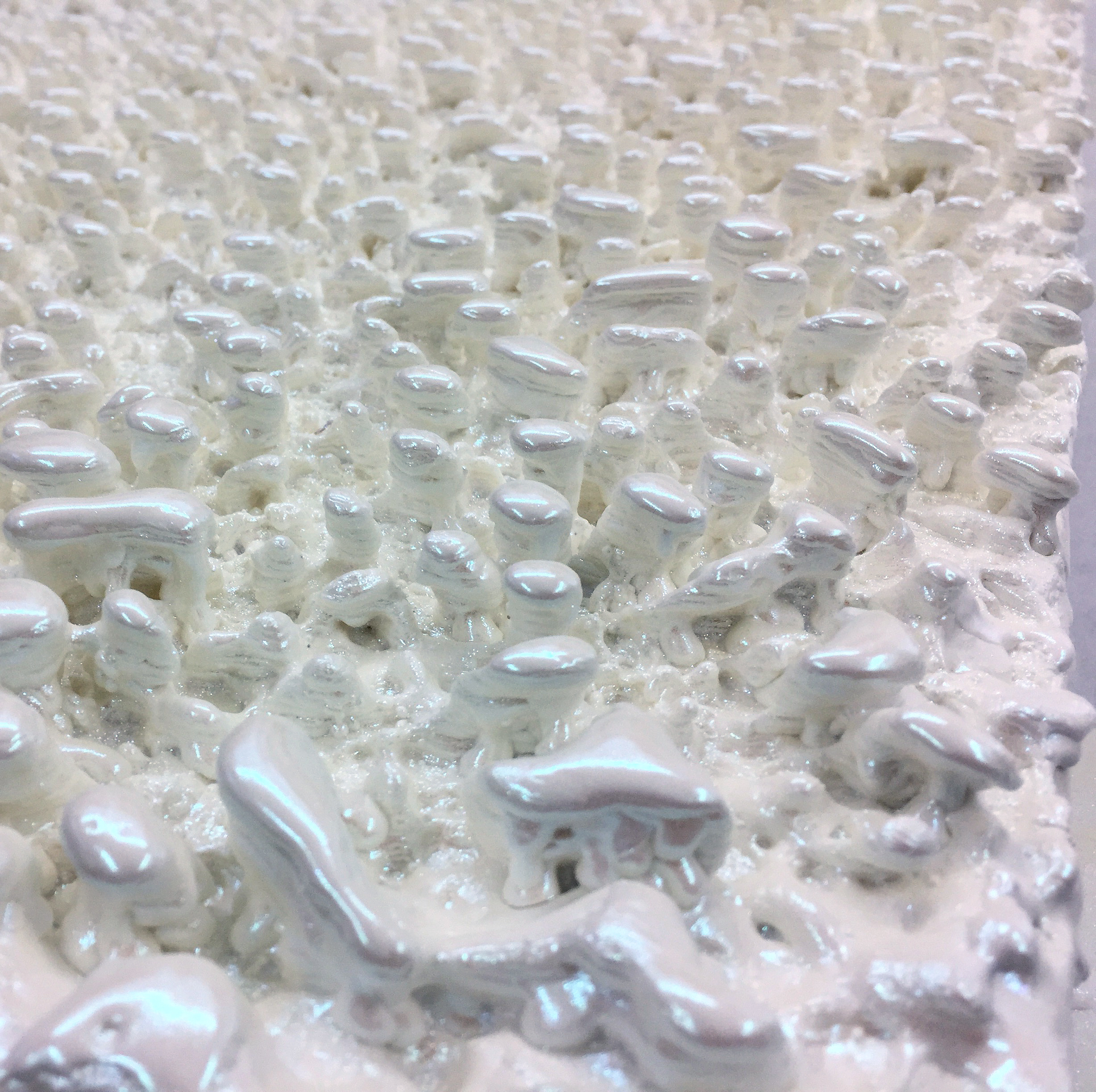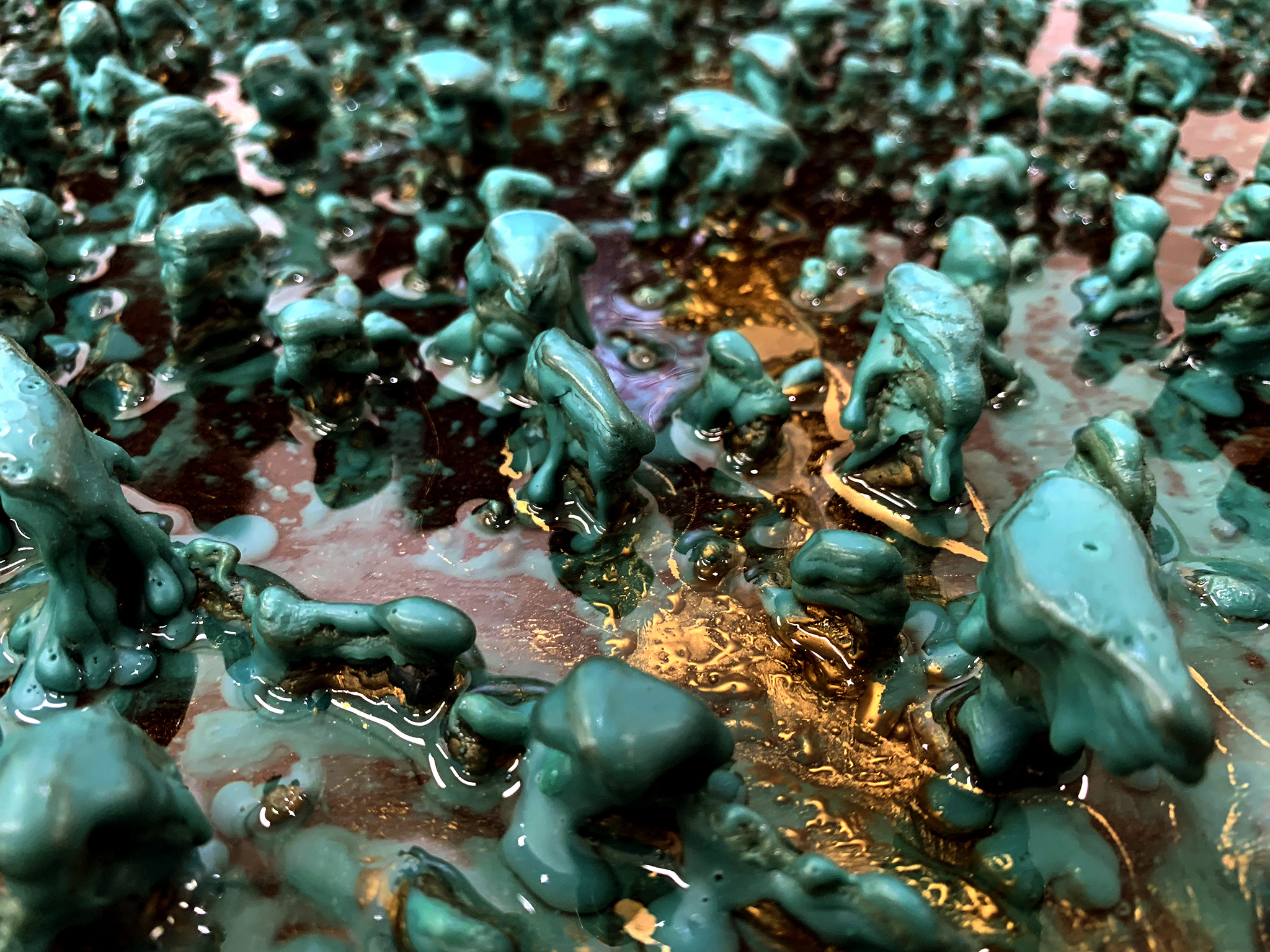Gene Kiegel’s works appear like materialization of light through pigment. Made of beeswax they continue the centuries-old tradition of wax painting or encaustic that uses the heated beeswax to which colored pigments are added resulting in most elaborate abstract paintings. In antiquity encaustic was used to create the famous Fayum mummy portraits in Egypt around 100 to 300 a. D. Later similar techniques using beeswax were common in the production of the icons of the Greek art dating as far back as the fifth century. In Gene Kiegel’s contemporary artistic practice using beeswax macroscopic and microscopic worlds merge into each other inspiring our imagination with unconventional colour combinations and unusually radiant, sparkling surfaces, voluptuously gleaming and enticing. The production process of the work is laid visible with surfaces revealing gestural scratches, cavities, roughly applied clouts of pigment offering completely new visual experiences. It’s painting and sculpture about nature executed with the means of nature. Two-dimensionality of the canvas is overcome promising an exceptional sense of palpable complex surface structure. It invites the spectator’s eye to wander in search of numerous details and intricate forms. Luminous mother-of-pearl tones, greenish-blue, iridescent or darker surfaces look enigmatic yet incredibly natural due to the organic rounded forms making up the picture surfaces. His sculptures on the other hand analyse form as if frozen in time, accentuating organic matter with its bizarre patterns, rhythmic curves and abrupt loops, reminiscent of explosive fountains suspended in the air. Their auratic character relies on vibration and modulation of tones, opening up new spatial perspectives and offering visionary form of purity. Art is immortalized in Kiegel’s oeuvre as an organic trace playing the game of changing dimensions, material and format. The works convey cosmic, planetary mysteries reminding us of remote stars, since all that is mother-nature to us is related to celestial energies. The surface structures are made up of sensitive tones and fine nuances manifesting inseparable unity of material, inviting us to think about the artistic practice as a laboratory of elementary connections, giving rise to chemical processes of matter that are generally hidden from us.






















